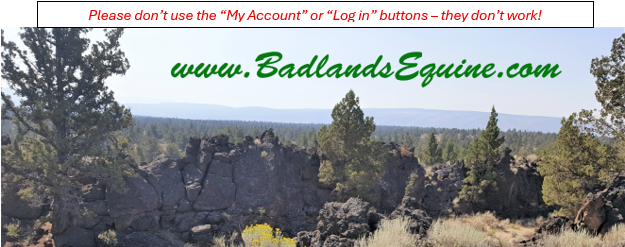Step 2: Shoulder Angle
Once you have determined where the saddle should sit on your horse’s back, you next need to focus on its fit. We start with the angle of the shoulder. As mentioned on the initial page, it is important that the saddle be wide enough for the breadth of the horse as well as follow his angle. A saddle that is not wide enough in breadth will sit too high, possibly with only a ridge of contact to the horse. The rider may also be unstable as the saddle has no ability to prevent side to side motion because there is insufficient contact at the sides of the wither.
The reason it's important to take into account both aspects of the horse’s shoulder conformation is that you lose “opportunity” to distribute weight over the biggest area possible, plus side to side stability, if the saddle is perched high on his back. It's best if the saddle sits as low as possible (without contacting the spine or wither).
If the saddle is too broad, it will sit too low and possibly contact the wither or spinal processes. This is a very painful situation for the horse and very quickly causes tissue damage and usually a negative reaction in the horse’s behavior as he tries to tell the rider about the problem.
If the saddle is broad enough, but the angle is too narrow, there will be very sharp pressure at the points of the saddle. The horse may react to the pain in obvious ways, or play the stoic. Instead he may shorten his gaits and the rider may eventually see white hairs and muscle loss.
So the saddle needs to have the correct breadth and angle to match the horse’s shoulder conformation. Check this by placing the saddle in the correct position per step 1, with no saddle pad, on the horse’s back.
Look at the line of contact made between the front of the saddle and the horse. Is there a gap toward the top? The saddle may not have enough breadth or be too narrow in angle. Is there a gap toward the bottom? A small gap may be ok – and give some room for muscle changes – but a large gap indicates that the saddle is too wide.
If the saddle is only too wide in breadth, but the angle follows well, a thicker pad may be the solution. If the saddle is too narrow in breadth or angle, no pad can solve the problem – it could increase the pressure, but certainly lift the rider too high for stability and affect weight distribution.
You must also look at the flare of the front of the saddle. You want some level of flare to allow for shoulder motion – to prevent the shoulder or shoulder musculature from running into a solid block of the tree. This is specific to a rigid tree saddle. A flexible panel will allow the shoulder to move underneath the panel if it is fitted and placed properly.
Now let’s continue thinking about what happens to the shoulder/saddle line with the horse in motion. Some horse change shape rather dramatically as they move. These are probably the horses for which the sensitive rider is continually trying new saddles, certain her horse is unhappy, but not sure why. Especially since many saddle fitters might determine a saddle fits perfectly as the horse stands square.
This is a great opportunity to use a tip from the previous step. Put your hand under the saddle, over the shoulder. Ask the horse to walk (or use a helper). Does it pinch, hurt? Think how much worse it would be with a rider's weight in the saddle. You shouldn't feel more than a gentle squeezing. If you feel gaps or pinching, something is wrong and this will help you determine if you need to change breadth or angle.
One thing to beware of - asking a saddle manufacturer for a tree description or measurement very rarely means anything. These metrics change from one saddler to the next, as does the place they make their measurement. It can even vary between saddles of the same line. There's no guarantee until you put the saddle on the horse and the horse tells you it works! Sad, but inevitable and true.
Another great tool to help you is the Port Lewis Impression Pad. These are worth their price - every club should invest in one as a group for all to use. They do need to be used carefully and kept in neutral conditions, but will still wear out over time. I'll try to put a page on here on analyzing the results, but there are probably plenty of sites out there with this information.
